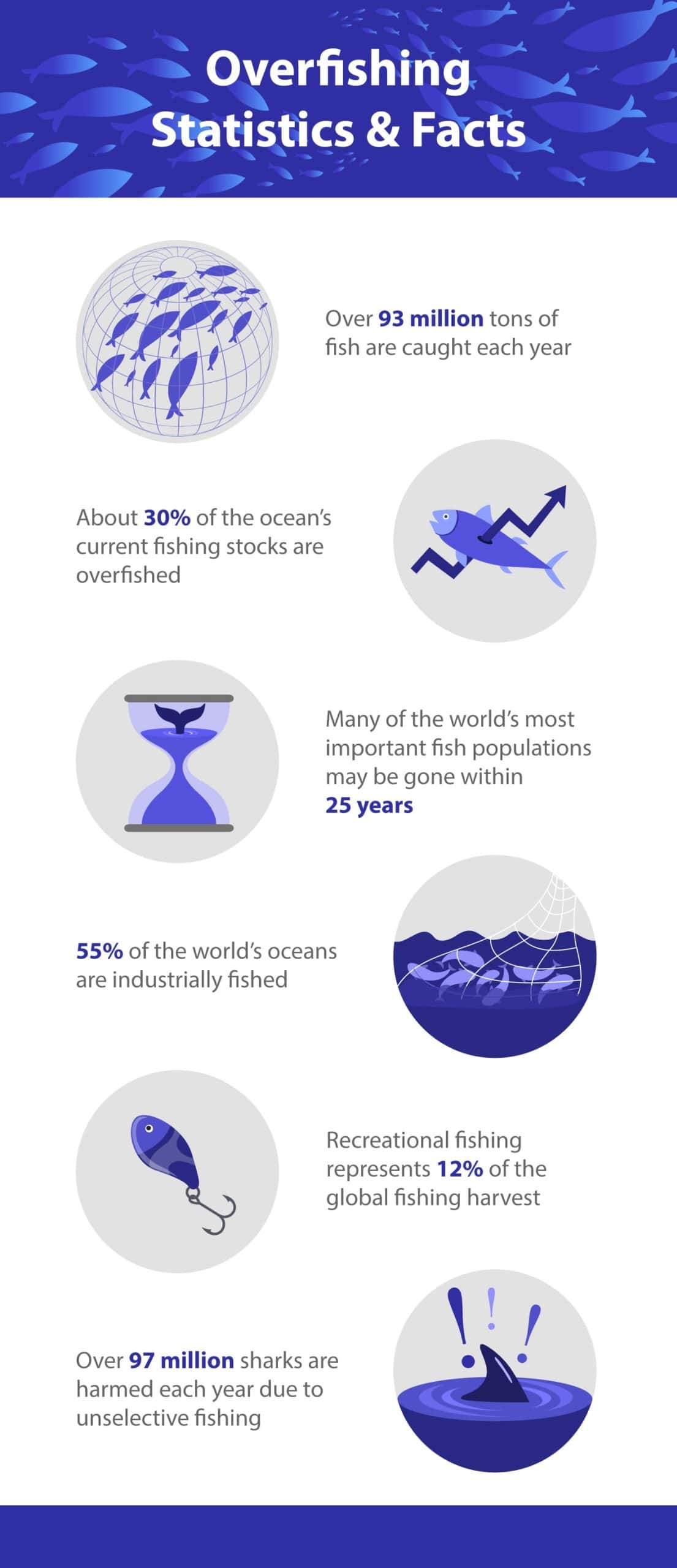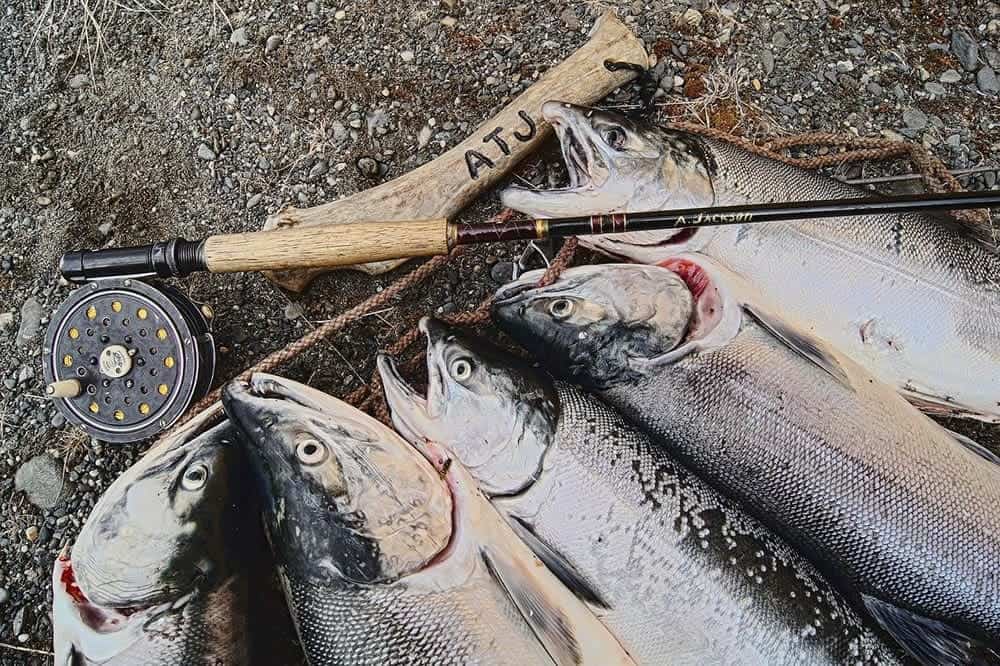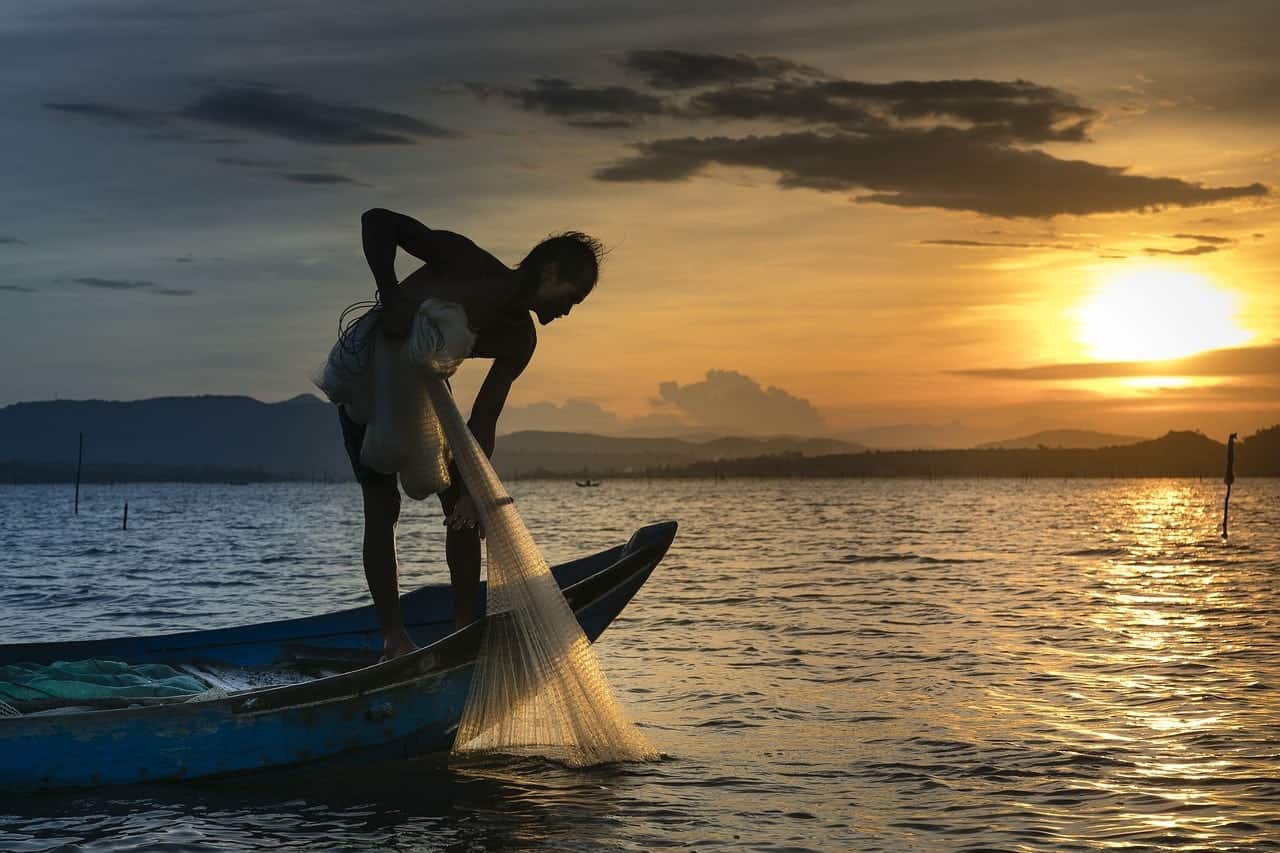Fish is a widespread protein source throughout the world. It is a staple in many cuisines and is widely regarded as the healthiest protein source that you can consume. For instance, there are high amounts of omega-3 fatty acids in fish, and these have been linked to reducing the risk of many different diseases.
However, the world only has so many fish. To meet the demand, many breeding populations are becoming overfished. Typically, this type of fishing is part of wasteful fishing practices, such as hauling large amounts of unwanted fish and then discarding them. Some species get harmed in the process.
Many fisheries remain unstudied, so we don’t know which fish are in the most trouble. However, according to the Environmental Defense Fund, up to 1/3 of the world’s fisheries may be overfished.

The 24 Overfishing Statistics
- People Are Eating More Fish
- 93 Million Tons of Fish Are Caught Each Year
- About 30% of the Current Fishing Stocks are Overfished
- Most Fishing Growth Comes From Large Companies
- Commercial Fishing Is Only Rising
- Illegal Fishing Is Driving Fish Populations Down
- Many Endangered Species Are Harmed by Bycatch
- 55% of the World’s Oceans Are Industrially Fished
- Important Fishing Stocks May Be Removed Within 25 Years
- Ocean Protections Are Overestimated
- Recreational Fishing Represents 12% of the Global Fishing Harvest
- Fishing Data Doesn’t Always Make Sense
- Overfishing Causes Malnutrition
- Not All Fisheries Are Fully Fished
- Large Species Are in Danger Too
- Most Bluefin Tuna Aren’t Old Enough to Reproduce
- Bigger Catches Don’t Translate to Larger Payouts
- Fishermen Lose Money Due to Overfishing
- FADs Are Now Being Used Heavily
- The Industry Would Benefit From Onboard Observers
- 0.97 to 2.7 Trillion Fish Are Killed Each Year
- Fish May Disappear by 2048
- The Mediterranean Is the Overfishing Hotspot of the World
- Our Current Fishing Fleet Is Four Times Too Large
What Are the Risks of Overfishing?

Overfishing directly harms the world’s oceans. When species of fish are decimated, it messes with the food chain and impacts other species. In the end, this affects the whole ecosystem.
Also, 3 billion people worldwide rely on seafood as a key source of protein. Without enough fish, the world could face a food crisis.

Overfishing Statistics & Facts
1. People Are Eating More Fish
According to the Food and Agriculture Organization, people are eating significantly more fish than they used to. In fact, they are eating twice as many fish as they were 50 years ago. This automatically puts a bigger strain on the fishing populations.
There are also more people in the world than there were 50 years ago. When the average person eats more fish and more people in total are eating fish, it is bound to cause issues.

2. 93 Million Tons of Fish Are Caught Each Year
But 38.5 million of these fish are bycatch. This means the fishermen didn’t mean to catch the fish. They just happened to be in the wrong place at the wrong time. Many of these fish are discarded. This directly affects their population, even though they never make it to the market. This is a result of preferred fishing practices, where fishermen only process select species.
Bycatch is widely underreported, though. We only have estimations, so the actual amount could be much higher.
Basically, a third of the fish removed from the ocean aren’t actually eaten.
3. About 30% of the Current Fishing Stocks Are Overfished
Worldwide, about 30% of fish species are overfished. This means they are being removed from the ocean faster than the population can recover. At this rate, certain fish populations will be gone in only a few years.
On top of this, another 60% of fishing stocks are completely fished. This means their population is staying even. If the amount of fishing increases, though, their population will begin declining. While these populations have not started declining yet, they are at risk of declining in the future.
When you put these statistics together, nearly all the world’s fishing stocks are at risk of overfishing or are already being overfished.
4. Most Fishing Growth Comes From Large Companies
It is not individual fishermen driving the rise of overfishing. Instead, it is mostly larger corporations. These companies often have the ability to move their ships to places with the lowest regulations, which enables them to catch more fish. This harms small businesses that are now unable to catch as many fish. When there are fewer fish in the waters, it is usually the smaller businesses that suffer.
5. Commercial Fishing Is Only Rising
The number of fish pulled out of the ocean is only rising. According to FAO, the number of fish pulled from the ocean increased by 5.4% from 2014 to 2017. It has only increased more since. The ability of fish populations to repopulate is not rising at all. Therefore, this increase will eventually start pushing populations down.
6. Illegal Fishing Is Driving Fish Populations Down
In most developed countries, the fish populations are carefully watched to ensure that they are not overcaught. However, this doesn’t happen everywhere. About 50% of fish imports are from developing countries that often have few or no regulations. Therefore, these fishing populations are more likely to be overcaught. No one is watching them to ensure that the population remains at a healthy level.
Even in places with regulations, people can still fish illegally. The standard to which the regulations are actually upheld varies. In some places, fishermen can openly fish illegally.
This sort of fishing makes up 12-28% of the world’s fishing. This amounts to anywhere from 11-26 million tons. It is difficult to get an exact number because most illegal fishing is not documented.

7. Many Endangered Species Are Harmed by Bycatch
While it is illegal to harm endangered species, many are accidentally caught during commercial fishing operations and then dumped back into the ocean. Some of these incidents are reported, but many are not.
The World Wildlife Fund suggests that there are 97 million sharks harmed each year due to unselective fishing. This is usually due to poor fishing methods, such as using nets that catch everything in their path. This leads to many sharks and other fish being accidentally caught and then dumped back into the ocean.
The worst fishing gear that harms sharks is longlining, which is typically used for swordfish, tuna, and halibut. This involves thousands of baited hooks being placed on a single fishing line. Sharks are commonly hooked, even if they aren’t the target of the operation.
8. 55% of the World’s Oceans Are Industrially Fished
Many of the world’s oceans are being controlled by industrial fishing. It is no longer true that most places are not fished, as it was in the past. Instead, the majority of the ocean is fished. Fishing occupies four times more area than agriculture and affects many more animals.
9. Important Fishing Stocks May Be Removed Within 25 Years
Many scientists agree that many of the world’s important fish populations will be gone within 25 years. This means that not only won’t those fish be around for us to eat, but their disappearance will also harm other fish populations. Many people will lose their livelihoods.
Predatory fish will also be affected. When they don’t have anything to eat, their populations will also decline. This upsets the entire ecosystem. Whole parts of the sea will become unable to sustain life.

10. Ocean Protections Are Overestimated
In areas where parts of the ocean are protected, these protections are often overestimated. In other words, there aren’t as many protected places as some organizations announce, according to one study. Only extremely protected areas where no fishing is allowed at all protect biodiversity. For instance, marine reserves see an average increase in total fish biomass by 600% every year. The fish are typically 25% larger, and the species richness is 20% higher than in unprotected areas. In comparison, 30% of fishing stocks are being depleted in unprotected areas, while 60% aren’t increasing at all.
About 5.7% of the ocean is reported as being protected. However, this number includes areas that are technically legally protected, but there is no implementation of the laws in any real manner. In other words, fishing still occurs in many protected areas. It also occurs in areas that don’t have any fishing laws at all but the intent to make such laws has been announced.
By taking out these areas, only 2% of the world’s oceans are protected.
11. Recreational Fishing Represents 12% of the Global Fishing Harvest
Industrial fishing is typically the major player discussed in overfishing. However, recreational fishing also matters. It accounts for around 12% of the world’s fishing catch, which is not an insignificant number. This does not include those who fish to survive, which often occurs in developing countries.
What happens to the fish taken by recreational fishers varies. To be fair, it is likely better to catch your own fish than to purchase them. However, this assumes that the fish is being eaten, which isn’t always the case.

12. Fishing Data Doesn’t Always Make Sense
There are many areas of the world where the fishing data doesn’t make sense. For instance, in Greece, the fish caught and hauled tend to randomly change for no obvious reason. It is likely not caused by environmental changes.
There are also many unusual estimates in fishing reports around the world. Many people have complained about the weakness of fishery statistics, which makes it difficult to determine which areas are overfished and which are not.
For this reason, the overfishing issue may be far worse than any of these statistics show. If fisheries are covering up the problem by smudging their statistics, there is no way that we would know the real numbers until the fishing populations collapse.
13. Overfishing Causes Malnutrition
As more fish are removed from the water, it becomes harder to catch fish. Industrial fishing companies can typically eat these losses or move their fleet elsewhere. However, people who rely on fishing for food cannot simply move or deal with catching less fish. There are many populations all over the world that rely on fish for their main protein source. These are usually low-income and small island nations that don’t have access to other sources of protein.
One analysis shows that without overfishing over the last hundred years, 20 million people could have avoided undernourishment in 2000. As overfishing increases, this figure also increases. The decimation of the fishing population leads to real difficulties for real people right now. It isn’t something that is going to cause difficulties in the future.
14. Not All Fisheries Are Fully Fished
When a fishery is fully fished, they are maximizing their catch. At this moment, only 60% of fisheries are fully fished, while 30% are overfished. Seven percent are not meeting their full-catch potential. If these fisheries improved their catch potential, then the other fisheries could afford to back off. This would allow fisheries to rebound in areas where they are hurting.
However, this would require global operations, though, which is unlikely. Overfished areas are typically in developing nations, while underfished areas are in developed nations.

15. Large Species Are in Danger Too
While most overfishing statistics are focused on smaller fish that are eaten all over the world, whales and larger species are in danger as well. On top of accidentally being caught as biomass, these species are purposefully hunted in some areas.
Japan is one of the most controversial nations when it comes to whaling. It withdrew from the International Whaling Commission to start commercial whaling once again and announced that it would re-start whaling hunts in 2019.
Iceland has also started hunting whales again. A report from Iceland found that it was “economically advantageous” to hunt whales despite the environmental concerns. According to this reasoning, whales eat fish. If there were fewer whales, there would be more fish, which would benefit fish populations.
However, this diminishes what we know about ecosystems working together.
16. Most Bluefin Tuna Aren’t Old Enough to Reproduce
Only 5% of the Bluefin Tuna population is old enough to reproduce. That leaves 95% of the population too young and small to reproduce. This is largely due to overfishing, where fish are caught younger and younger. Without the older, mature fish reproducing, the population cannot increase.
The Bluefin Tuna population has already dropped 96% due to overfishing. In long-lived species like this, overfishing can cause problems sooner. The population is less likely to grow old and reproduce, which means that their numbers will drop faster than short-lived populations.
This fish now sells for millions of dollars due to the demand and rarity. This likely means that fishing companies will not stop looking for the fish.

17. Bigger Catches Don’t Translate to Larger Payouts
While commercial fishing has increased, the money being pulled in has not. For instance, the catch increased by 12% from 2012 to 2018, while the revenue of the fishing industry decreased by 2%. This is largely due to the increased supply. As fishermen fished more, the prices of the fish went down. This, in turn, lowered their actual income. They were doing more work for less money.
This suggests that the maximum catch isn’t the most profitable one. Fishermen might make more if they fished less.
18. Fishermen Lose Money Due to Overfishing
In 2009, fishermen likely lost a total of $164.2 million due to overfishing. If fishing populations had been healthier, fishermen would have been able to reach the maximum sustainable haul. In other words, they could have pulled out more fish and spent doing so, while still keeping the populations healthy.
Overfishing hurts fishermen the most.
19. FADs Are Now Being Used Heavily
FADs are “fish aggregating devices” that drift freely in the ocean. They are usually supplied by industrial fishing companies because they are expensive. These devices catch almost 1/2 of the world’s tuna, though they have unknown effects on the environment. They are not regulated or tracked by any fishing organization. They are considered “confidential” and therefore, are not reported.
These devices can remain in the ocean for years, and we do not know how many are actually retrieved.
20. The Industry Would Benefit From Onboard Observers
Currently, observers are only required to be on board for about 5% of all fishing trips in areas where they are required at all. This is mainly to reduce the byproduct of species caught, which often includes endangered species like sharks and turtles.
However, lower observer coverage can lead to inaccuracies in reporting. By increasing the number of observers required by 20%, you could increase the accuracy of catch statistics by 50%. If you put observers on every commercial fishing vessel, your statistic accuracy would rise even more.
Since fishing statistics are widely incorrect, this could be a big help in preventing overfishing. It is hard to know what species are being most affected when your statistics and catch information are wrong.
Having observers onboard is the easiest way to correct this problem.
21. 0.97 to 2.7 Trillion Fish Are Killed Each Year
In all, it is estimated that trillions of wild fish are caught in the wild and killed each year. This includes fish that are hauled in, bycatch fish, and fish that are killed by other industries. While fishing is obviously the biggest risk to fish, other sea operations kill fish. Oil spills and similar environmental hazards also have to be taken into account.
This does not include fish that are raised in captivity. These fish likely number in the billions, with many of them also being killed in record numbers.
22. Fish May Disappear by 2048
It is estimated that fish may disappear from the ocean by 2048 if we continue on the path that we are on today. This includes virtually all fish populations, including those that we don’t really eat, like dolphins. If we eat all the fish in the ocean, we will be out of food and the population will starve. This doesn’t even account for the fish that are caught as bycatch.

23. The Mediterranean Is the Overfishing Hotspot of the World
Currently, the Mediterranean has overfished stocks at 62%. This makes it the most overfished area in the world. This area is also known for messing with fishing statistics, so the rates could actually be far higher.
Furthermore, this statistic was taken in 2018, and the area has done little to stop the trend. Therefore, the number is likely to be far higher today.
24. Our Current Fishing Fleet Is Four Times Too Large
Currently, the global fishing fleet could cover at least four Earths, with a few fleets still left over. This is one of the main causes of overfishing. We simply have too many people trying to fish.

Where Does All This Leave Us?
All these statistics show us two things:
- Entire ecosystems are affected by overfishing, not just single species. When one species goes, the whole system goes.
- Losing fish species affects more than just the environment. Without fish to catch, the whole fishing industry will be affected. This doesn’t even include people who require fish as their main source of protein.
A good example of overfishing collapsing an industry occurred in Newfoundland, Canada, in 1992. In these communities, fishing was the livelihood of many people. However, in 1992, a moratorium was declared as the cod population declined sharply. This was due almost exclusively to overfishing.
After the fish population collapsed, 35,000 people lost their jobs. These were not only people who ate cod but also those who worked at surrounding factories. Today, the population still hasn’t rebounded and fishing cod is not allowed.
This could happen to multiple fish populations around the world. With the way that the current statistics are going, it could easily happen to many different industries all at once. Once one species goes, others will quickly follow. Therefore, millions of people could lose their jobs all at once. This isn’t counting the environmental impacts of the disappearing species, which could lead to other industries being affected.
Featured Image Credit: Pixabay
